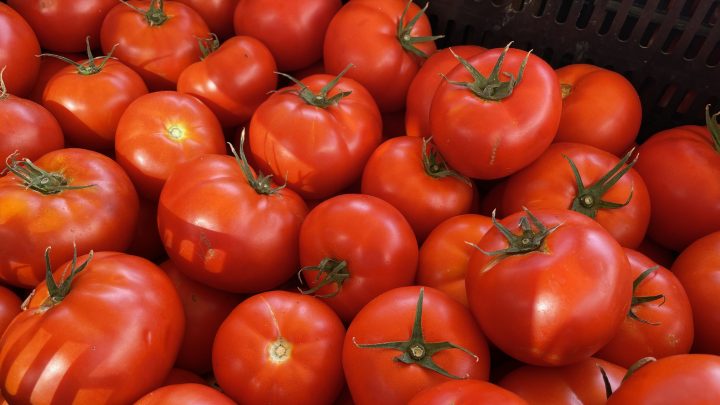
With water in the West scarce, some tomato farmers look to hydroponics
With water in the West scarce, some tomato farmers look to hydroponics

On Scott Beylik’s 4-acre farm about 60 miles northwest of Los Angeles, rows of tomato vines climb wires strung from the beams of his greenhouses. There’s no soil, so the roots are submerged in little bags with water. Every drop of water he uses goes directly to the plant.

As the drought in the West drags on, the future of water-loving crops like tomatoes hangs in the balance. Hydroponic farming — the technique Beylik farms with — uses as little as 10% of the water traditional systems use to grow tomatoes and other field crops.
“We’re pretty precise. Our drippers are pressure-compensated, and they’re literally putting out half a gallon per hour,” Beylik said.
When his grandfather started the farm in the 1970s, growing tomatoes inside greenhouses was a pretty radical idea. Now, about a third of domestic fresh tomatoes are grown this way.
But that doesn’t account for the bulk of the tomatoes grown in the United States. Most are “processing” tomatoes, meaning they are canned, bottled and jarred into soups, ketchups and salsas. In that sector, hydroponics isn’t catching on at all.
“Because the labor and the capital of a greenhouse, for example, is so much more than the water cost is,” said agricultural economist Dan Sumner at the University of California, Davis.
Processing tomatoes can be picked by machines, and that holds down labor costs. Moving the tomatoes inside and using hydroponics require people to pick them.
Still, Sumner said, over time, it will get harder for farming in California to be profitable. He’s already seeing water-intensive crops like hay and corn leave the state, but tomatoes are safe for now.
“There’s a ways to go on those crops before we check off the boxes and get down to processing tomatoes,” he said.
And if it ever gets to that point, Sumner said, the tomatoes likely won’t move to greenhouses. They’ll move to somewhere like Mexico, where labor is cheaper.
“I haven’t heard anyone talk about a period of time in which we’d grow indoor tomatoes in California for processing. It’s much more likely that they might be grown somewhere else.”
Hydroponics has the best chance of catching on with small, local farms, where big machines and international relocation aren’t options.
Scott Beylik said it’s most affordable for him to grow that way. After his outdoor competitors harvest the last of their summer crop, he keeps making money all winter long.
“In a way, it balances out. We’re able to grow 365 days,” he said. “With that, we’re getting more crops. In the field, you’re only going to do maybe one a year because it’s seasonal.”
But hydroponics doesn’t make financial sense for all growers. Sunrise Organic Farms, in the Santa Barbara area of California, still grows its tomatoes outside.
“At the size that we are, they’re very expensive. We deal with a lot of wind in our community as well,” said Samantha Watson of Sunrise. “You could spend days building them, pay your whole crew and then you get a bad wind and you’re like, ‘Welp, there goes the greenhouses.’”
The vine-ripe tomatoes from Beylik and Sunrise both cost about $4 per pound at the farmers market. For now, these two farms have come up with different ways to stay in the tomato business with the water they have access to. But as water becomes more scarce in California, their calculations might have to change.
There’s a lot happening in the world. Through it all, Marketplace is here for you.
You rely on Marketplace to break down the world’s events and tell you how it affects you in a fact-based, approachable way. We rely on your financial support to keep making that possible.
Your donation today powers the independent journalism that you rely on. For just $5/month, you can help sustain Marketplace so we can keep reporting on the things that matter to you.

















